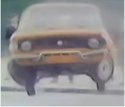Monday Night in Inner City Perth Nightclub land 20 June 1988 it is going to be a slow night.
At the Parmelia Hilton it is Hospitality Staff who all pretty much know each other ,a smattering of interstate/ international guests, Miners on break,Northbridge types and the odd Hooker.
JC has left her purse at home,she is not working four hours minimum wage to then spend it on after work drinks. Free or nothing at the staff function. A few other hospitality workers from surrounding nightclubs are also aware of/ invited to the after work function.
In the car park as she leaves JC is possibly tricked into to giving her abductor a ride home- South of the River. ? Car broken down.? Too much to drink.? Sure why not.
After rebuffing unwanted advances she is assaulted, put in the back seat then driven to a remote location.
Whilst returning from this location her killer rolls the car ,and has to limp it back into Perth, cover /hide it, then brazenly drive it down to the surf in Cottesloe-perhaps as another poster has surmised, intending to dump the back seat there before realising he could get the whole car in.
Fearfull of publicity jogging the memory of someone who has assisted him with the recovery and disposal at some stage,(tow truck driver, farmer ,passerby ) he has afterwards called the West Australian Newspaper claiming to be JC and not wanting a fuss made or to be found. The last thing he wanted was a front page picture of the Fiat.
So I think he came close to being caught
A as an informal aquaintance of JC through work
B rolling the car , having to store /hide it for a day or two
C driving the damaged car through suburban back streets and into the sea without being observed.
All JMO and theory.
Thanks for your scenarios', Interesting, getting into the mind set of the killer. Recent newspaper articles I posted from very close to the time of the disappearance IMO are useful, as later reporting seemed to have summarised and / or missed some details out maybe reflecting the later journalists bias or ideas.
The earlier ones also may have had inaccuracies as they were reporting as the crime was unfolding, didn't have information of the plastic bag with work shirt that was seemingly reported found a year later, or the concerns of the family that JC was being stalked.
I find it interesting that the back seat was found on the Monday (I have not been able to find this yet but what has been reported from a long and detailed article on this in the Post.
At around 12.30 am the next morning, Monday 20th June, wearing a high-collared black evening dress, ... Later that same day a cars backseat was retrieved from the sea, near the groyne, at Cottesloe Beach") and the car on Wednesday.
Did someone take the back seat down to the end of the groyne early on the Monday morning of the 20th June (JC last seen 12.30am), and throw it off the end?
It would match the southerly coastal drift patterns and minimal tide coming in that it washed up on the beach south of Cott later that day.
Storing the car under tarp would also make sense as it was reported her sister and friends were distributing a poster of her car with her image. (
Daily News 30th June 1988: the car is now a 1968 Fiat 125 sedan. The paper prints a photograph of a poster that Julies friends and family are distributing that shows two photos of Julie and a picture of a similar car.)
These early newspaper reports also mention a man and woman who were seen leaving the function soon after JC (
On Friday 24th June 1988, on page 3 (a whole 5 pages more prominence) the West Australian reports that the back seat of Julies car was found in the sea, near the groyne, on Monday. The car was discovered 35 metres from the beach and had been left with its ignition and lights on, front drivers side window open, rear doors locked and both front doors unlocked. Det. Sgt. Katich is appealing for a man and a woman seen exiting the hotel just after Julie to come forward. Police also appeal for anyone who saw Julies car parked either on the slip road near the surf club or nearby to contact them.)
Do you think there could have been an accomplice, an older female experienced and helpful in making JC more comfortable when approached?
Also the report is of a female contacting the offices of the West Australian, (On Wednesday 29th June, on page 3, the West Australian writes that the Fiat is grey and that Julie worked as a barmaid at the hotel. The newspaper says that a woman phoned their offices on Monday 27th and asked to be left alone. They report that Julies sister, Nicole says it might have been Julie), but I agree that calling pretending to be JC and not wanting a fuss made or to be found would make them think maybe she has run away and stop reporting.
Sgt. Katich I think, was the detective who got Birnie to tell him the burial sites in his interview with him. It refreshingly says somewhere that Katich was keeping his mind open to what happened.
Finally, could the Government Road cul de sac, adjacent to KK be somewhere he could have taken JC and conveniently hide the car until he (they) disposed of it?








